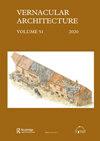The Pre-Industrial Lowestoft Fish Office: Reading Socio-Political Events Through a Vernacular Building
IF 0.3
4区 艺术学
0 ARCHITECTURE
引用次数: 2
Abstract
In December 2019, no. 329 Whapload Road — an unassuming brick, flint and cobble building facing the North Sea across Lowestoft’s former beach area — was added to the National Heritage List for England and afforded Grade II statutory protection. Previously believed to be a nineteenth-century net store, a ubiquitous structure along Whapload Road, the detailed multi-disciplinary research which underpins this article has challenged the existing interpretation of these buildings, revealing no. 329 Whapload Road to be a multi-function, multi-phase fish-processing building known locally as a ‘fish office’. This article will argue that the extant and lost buildings at the northern end of Whapload Road represent a specific and previously uncategorised building type: the pre-industrial Lowestoft fish office, of which no. 329 is the sole complete survivor. Moreover, the article will show that the building type represents a specific local response to the significant regional, national and international socio-political and economic events of the mid to late seventeenth century which preceded two centuries of unchecked expansion by the British herring fishery. The detailed analysis of a complete pre-industrial fish office, as presented here, set within its historical and landscape context, serves as a case study, broadening our understanding of the evolution of buildings associated with the eighteenth-century east coast herring fishery and how those buildings were shaped by dramatic local events, by local vernacular traditions and by the development of processes associated with the production of red herring.前工业时代的Lowestoft Fish办公室:通过乡土建筑解读社会政治事件
2019年12月,Whapload路329号被列入英国国家遗产名录,并获得二级法定保护。此前,人们认为这是一个19世纪的网店,是Whapload路沿线随处可见的结构,支撑这篇文章的详细的多学科研究挑战了对这些建筑的现有解释,揭示了Whaplod路329号是一座多功能、多阶段的鱼类加工建筑,在当地被称为“鱼类办公室”。本文认为,Whapload路北端现存和丢失的建筑代表了一种特定的、以前未分类的建筑类型:工业化前的Lowestoft鱼类办公室,其中329号是唯一完整的幸存者。此外,这篇文章将表明,这种建筑类型代表了当地对17世纪中后期重大地区、国家和国际社会政治和经济事件的具体反应,这些事件发生在英国鲱鱼渔业两个世纪未受控制的扩张之前。如本文所述,在其历史和景观背景下,对一个完整的工业化前鱼类办公室进行了详细分析,这是一个案例研究,拓宽了我们对与18世纪东海岸鲱鱼渔业相关的建筑演变的理解,以及这些建筑是如何被戏剧性的当地事件塑造的,当地的乡土传统和与红鲱鱼生产相关的工艺发展。
本文章由计算机程序翻译,如有差异,请以英文原文为准。
求助全文
约1分钟内获得全文
求助全文
来源期刊

Vernacular Architecture
ARCHITECTURE-
CiteScore
0.70
自引率
50.00%
发文量
1
期刊介绍:
Vernacular Architecture is the annual journal of the Vernacular Architecture Group, which was founded in 1952 to further the study of traditional buildings. Originally focused on buildings in the British Isles, membership and publications have increasingly reflected an interest in buildings from other parts of the world, and the Group actively encourages international contributions to the journal.
 求助内容:
求助内容: 应助结果提醒方式:
应助结果提醒方式:


